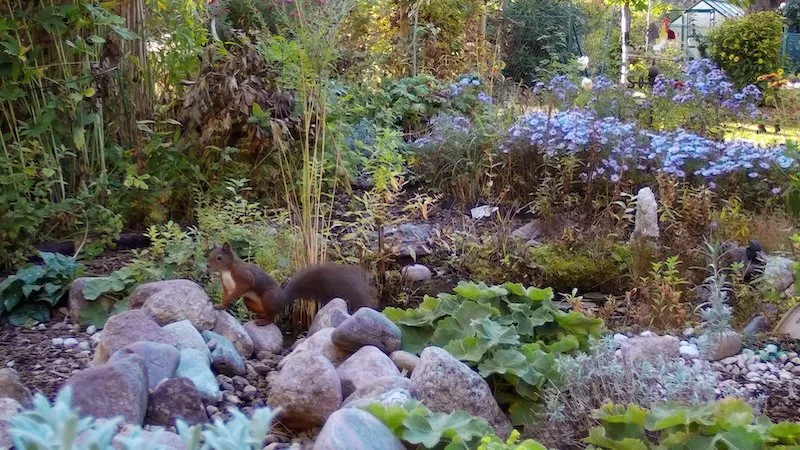
Urban Red Squirrels: Masters of Adaptation in a City Landscape
2024-11-24
Author: Jia
Introduction
A fascinating new study highlights the incredible adaptability of urban red squirrels in Berlin, particularly during the unique conditions of the COVID-19 lockdowns. Researchers from the Leibniz Institute for Zoo and Wildlife Research (Leibniz-IZW) have uncovered that these nimble critters significantly adjusted their daily activities in response to the presence of humans, pets, and natural predators like the beech marten.
Methodology
Using an array of wildlife cameras, scientists meticulously monitored the activities of red squirrels over extended periods across various times of the day and year. The published findings in “Frontiers in Ecology and Evolution” reveal that during the lockdown, when human activity in public spaces decreased, urban red squirrels were observed to be more active than ever.
Behavioral Adaptations
Remarkably, it was found that these squirrels exhibit a heightened caution towards domestic cats, known to pose a considerable threat. Eurasian red squirrels (Sciurus vulgaris) in bustling urban environments face numerous challenges. Yet, the green spaces, allotments, and gardens scattered throughout cities offer these small mammals vital habitats.
Their survival hinges on a remarkable ability to modify their behaviors in response to threats while optimizing their food intake. Red squirrels typically restrict their movement extensively in the presence of free-roaming cats, avoiding these areas altogether and becoming briefly active in others.
Research Findings
Led by Professor Stephanie Kramer-Schadt, the research team focused on specific diurnal and seasonal activity patterns, analyzing data collected during four surveys before and during the lockdowns. “Our analyses reveal that red squirrels primarily alter their behavior to avoid predators rather than humans,” Kramer-Schadt noted. This demonstrates a sophisticated risk management system embedded in their instinctual behavior. When predators are absent in the area, activity spikes as they forage more freely—but once predators arrive, they reduce their activity significantly to avoid becoming prey.
Interestingly, while domestic cats were found to be the biggest threat, domestic dogs had a negligible impact on the squirrels’ behaviors. The study indicates that dogs often mirror human patterns; their presence doesn’t deter the squirrels to the same extent.
Impact of Lockdowns
Another striking finding was the effect of the lockdowns on urban squirrel behavior. With humans largely confined to their homes, many began to enhance their gardens for wildlife, introducing plants and feeders. This surge in food availability likely encouraged more frequent squirrel visits to urban gardens, highlighting the positive role urban planning can play in supporting wildlife.
Conclusion
The delicate balance of urban ecosystems is further revealed in this research. As cities expand, the design of gardens and public spaces plays a pivotal role in the survival strategies of wildlife. It becomes clear that urban environments, often perceived as inhospitable, can be nurturing for red squirrels when humans adapt their surroundings thoughtfully.
This groundbreaking study not only sheds light on the tenacity and adaptability of urban red squirrels but also underscores the role people play in enhancing urban wildlife habitats. With small adjustments in our landscaping choices, we can foster a welcoming environment for these charming creatures, ensuring their survival amid the complexities of city life.



 Brasil (PT)
Brasil (PT)
 Canada (EN)
Canada (EN)
 Chile (ES)
Chile (ES)
 España (ES)
España (ES)
 France (FR)
France (FR)
 Hong Kong (EN)
Hong Kong (EN)
 Italia (IT)
Italia (IT)
 日本 (JA)
日本 (JA)
 Magyarország (HU)
Magyarország (HU)
 Norge (NO)
Norge (NO)
 Polska (PL)
Polska (PL)
 Schweiz (DE)
Schweiz (DE)
 Singapore (EN)
Singapore (EN)
 Sverige (SV)
Sverige (SV)
 Suomi (FI)
Suomi (FI)
 Türkiye (TR)
Türkiye (TR)